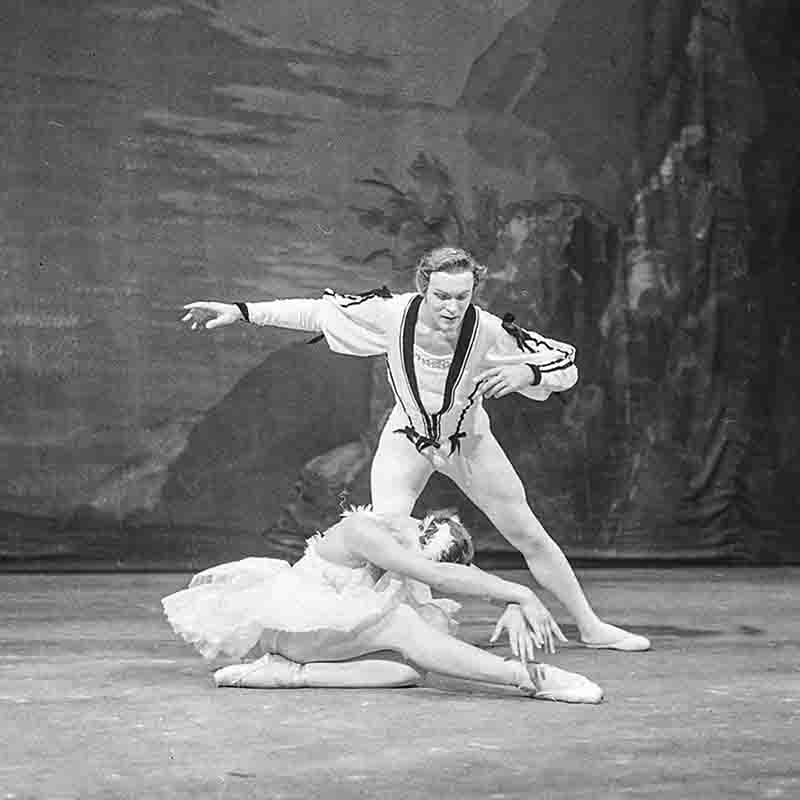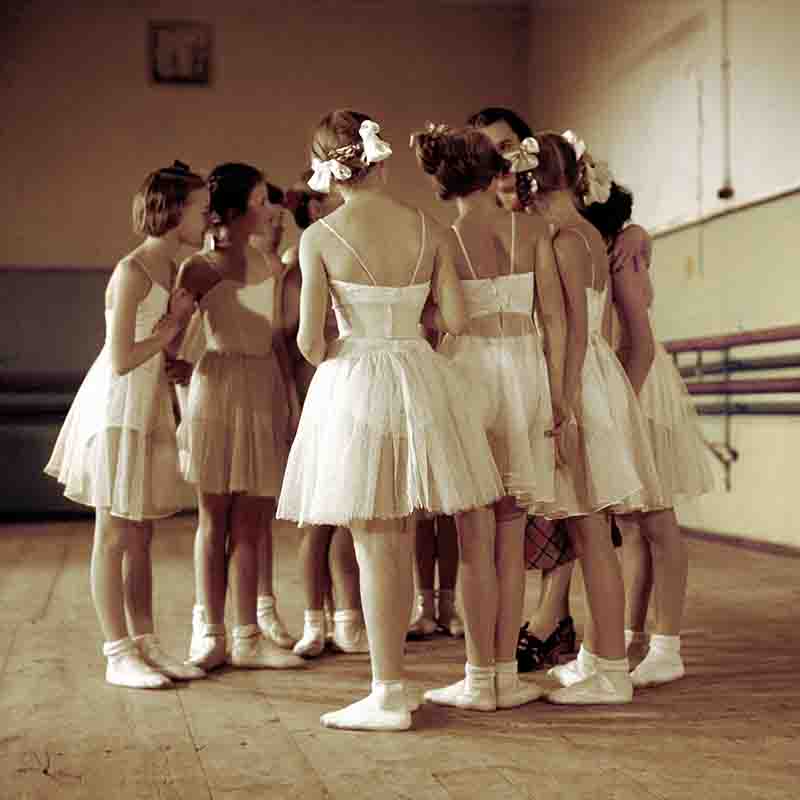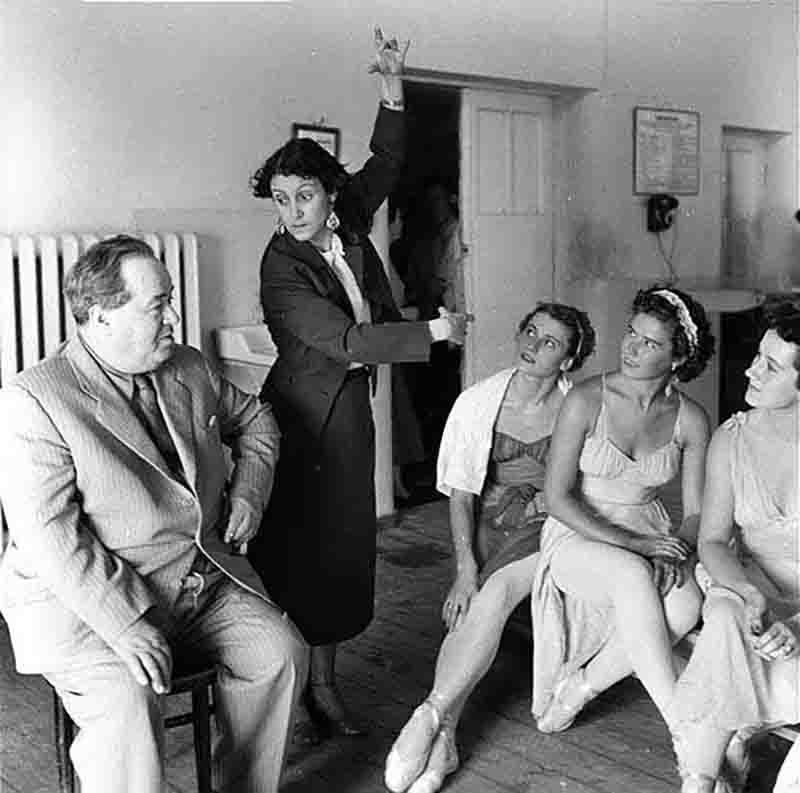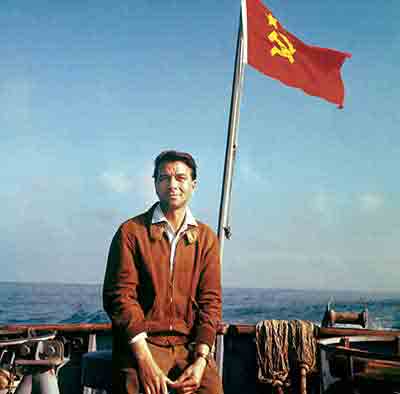Step Inside the Bolshoi Theater
The Bolshoi Theater in Moscow is one of the world’s most renowned cultural institutions. Originally named the "Moscow Theater," it was rebranded as the Bolshoi, meaning "large" in Russian, to reflect its grand scale.

The Bolshoi Theater is more than a cultural icon of Russia—it’s a symbol of the country’s shifting political, social, and cultural landscapes.
The Bolshoi Theater, established in 1776, is one of the most prestigious institutions for ballet and opera in Russia and globally.
Located in Moscow, it has played a key role in Russian cultural life for over two centuries.
The theater has gone through various historical periods, including imperial Russia, the USSR era, and modern Russia.
During the Soviet period, especially under Stalin, the Bolshoi was closely linked to state ideology, with performances reflecting socialist realism and national pride.
It was used to promote Soviet cultural dominance, both domestically and internationally, as it toured extensively during the Cold War.
In 1956, Peter Bock-Schroeder (1913-2001) was the first West German photographer to succeed in creating a photo reportage behind the scenes at the Bolshoi Theater.
12 key facts about the Bolshoi Theater
-
Founded in 1776: The Bolshoi Theater was originally founded as a private theater by Prince Pyotr Urusov and Michael Maddox. It has since become a symbol of Russian cultural heritage.
-
Architectural Landmark: The Bolshoi Theater building, designed by Joseph Bové, opened in 1825 and is recognized for its neoclassical façade and grand interiors. It is one of Moscow’s architectural icons.
-
Imperial Support: During the Russian Empire, the Bolshoi was supported by the monarchy, becoming a prestigious venue for opera and ballet performances under the patronage of the Tsar.
-
Soviet Era Influence: After the 1917 Revolution, the theater became state-owned. It was a significant tool for promoting Soviet culture, with performances reflecting socialist realism and state ideology.
-
Stalin’s Patronage: Under Stalin, the Bolshoi thrived as the USSR’s cultural flagship, producing grand, ideologically aligned performances. Stalin took a personal interest in the theater, and its productions were used for political purposes.
-
Iconic Ballets: The Bolshoi is world-famous for its ballet performances, including classics like Swan Lake, The Nutcracker, and Giselle. Its style is known for bold, athletic choreography and emotional expression.
-
Global Tours: Throughout the Cold War, the Bolshoi was sent on international tours as a cultural ambassador of the Soviet Union, showcasing Soviet artistic excellence worldwide.
-
Renowned Artists: The Bolshoi has produced many legendary dancers and choreographers, including Maya Plisetskaya, Galina Ulanova, Vladimir Vasiliev, and Yuri Grigorovich, who significantly influenced 20th-century ballet.
-
Opera Tradition: Besides ballet, the Bolshoi Theater is a leading venue for Russian opera, staging works by composers like Tchaikovsky, Mussorgsky, and Rimsky-Korsakov, among others.
-
Renovation and Reopening: The Bolshoi underwent a major renovation from 2005 to 2011, which restored its historical architecture and updated its technical facilities. The reopening marked a new chapter in its history.
-
Controversies and Challenges: In recent years, the Bolshoi has faced controversies, including political tensions, scandals involving leadership disputes, and attacks on performers, such as the 2013 acid attack on its artistic director, Sergei Filin.
-
Cultural Symbol: The Bolshoi remains a cultural symbol of Russia, representing both its imperial past and Soviet legacy. It continues to influence global ballet and opera, attracting top talent and large audiences worldwide.
These facts highlight the Bolshoi's historical, political, and cultural importance over the centuries.
Bolshoi Theater: A Pillar of Russian Cultural and Artistic Heritage

The Bolshoi Ballet Academy, which trains the theatre's dancers, is one of the most prestigious ballet schools in the world, attracting students from all over the globe.
The Bolshoi has been known for its ballet productions, including iconic works like "Swan Lake" and "The Nutcracker."
It has produced world-renowned dancers and choreographers, such as Galina Ulanova, Maya Plisetskaya, and Yuri Grigorovich.
The theater's leadership and policies have often reflected broader political trends, with state control being prominent during the Soviet era.
Bolshoi Theater: Timeline
The Bolshoi Theater, founded in 1776, is one of the most renowned cultural institutions in Russia.
Today, it is globally recognized for its ballet and opera productions, representing a long-standing tradition of artistic excellence in Russia.
| Year | Milestone |
|---|---|
| 1776 | Foundation of the Bolshoi Theater by Prince Peter Urusov and English entrepreneur Michael Maddox in Moscow. Initially focused on drama and opera performances. |
| 1780 | The Petrovsky Theater (predecessor of the Bolshoi) is established on Petrovka Street. It was one of the main cultural hubs in Moscow. |
| 1805 | The Petrovsky Theater burns down. This event leads to a series of transitions in the city's cultural institutions. |
| 1825 | The new Bolshoi Theater building opens, designed by architect Joseph Bové. It becomes the main venue for opera and ballet. |
| 1856 | The theater is renovated for the coronation of Tsar Alexander II, marking its growing importance in the Russian Empire. |
| 1877 | Pyotr Ilyich Tchaikovsky's "Swan Lake" premieres at the Bolshoi Theater. This marks the start of the Bolshoi's long association with ballet. |
| 1888 | Fire destroys the Bolshoi Theater, but it is quickly rebuilt. The theater continues to be a cultural center for the Russian elite. |
| 1917 | The Russian Revolution leads to the nationalization of the Bolshoi Theater by the Soviet government. It becomes a symbol of Soviet cultural policy. |
| 1924 | Under the Soviet regime, the Bolshoi becomes an important propaganda tool, staging operas and ballets that reflect Soviet values. Maxim Gorky and Anatoly Lunacharsky take leading roles in its cultural administration. |
| 1935 | Stalin's cultural policy begins to influence the Bolshoi. The theater is heavily censored, and many works reflect socialist realism. However, it also gains prominence globally. |
| 1941-1945 | During World War II, the Bolshoi continues performing, even as Moscow is bombed. Some performances are moved to Kuibyshev (now Samara) to protect the company. |
| 1945 | After World War II, the Bolshoi becomes a cultural ambassador for the Soviet Union during the Cold War. Its tours abroad serve to showcase Soviet cultural superiority. |
| 1956 | The Bolshoi’s first tour to London becomes a global sensation, helping to solidify its international reputation as a ballet powerhouse. |
| 1964 | The Bolshoi Orchestra is awarded the title "Academic," further elevating the status of its musical performances. |
| 1987 | Yuri Grigorovich, one of the most influential choreographers in the Bolshoi’s history, retires. His tenure (1964–1987) is marked by some of the most iconic ballets, such as "Spartacus." |
| 1995 | The Bolshoi Theater undergoes structural restoration. Significant renovations begin due to wear and deterioration of the historical building. |
| 2005-2011 | The Bolshoi closes for extensive renovations costing nearly $1 billion. During this time, performances are held at an auxiliary building next door. |
| 2011 | The grand reopening of the Bolshoi Theater occurs after six years of renovation. The restored building returns the Bolshoi to its architectural and acoustic glory. |
| 2013 | Bolshoi ballet director Sergei Filin is attacked in a highly publicized acid assault, drawing attention to internal politics and corruption within the theater. |
| 2016 | Bolshoi’s ballet "Nureyev," directed by Kirill Serebrennikov, premieres but is mired in controversy due to its depiction of the famous dancer's homosexuality. The production reflects ongoing political tensions in Russian society. |
| 2020s | Bolshoi Theater continues to function as one of the most prestigious opera and ballet companies globally. New artistic and political challenges are part of the evolving identity of the institution. |
This timeline covers key milestones in the theater's development, emphasizing both artistic achievements and historical events that influenced its role in Russian and Soviet culture.
The Bolshoi Theater: A Pillar of Russian Culture

Yuri Fyodorovich Fayer (1890–1971) and Sulamith Mikhailovna Messerer (1908-2004), Bolshoi Theater Moscow, 1956
Early History of the Bolshoi Theater
The Bolshoi Theater, in its earliest form, was established during the reign of Catherine the Great.
It began in 1776 when Prince Pyotr Urusov, with the assistance of an English entrepreneur, Michael Maddox, was granted permission to host performances.
While the early Bolshoi wasn’t the grand institution we recognize today, it was nonetheless an important venue for Moscow’s aristocracy.
By the early 19th century, the theater had garnered the attention of the Russian Imperial court, with Tsar Alexander I offering state funding.
This patronage was essential for the theater’s survival and growth.
In 1825, the Bolshoi moved to its current location, housed in a grand building designed by architect Joseph Bové after a fire destroyed the previous structure.
This move marked a significant step in the theater’s development, symbolizing its transformation from a modest venue into a national institution.
The Bolshoi Theater and the Russian Revolution
The Russian Revolution of 1917 disrupted nearly every aspect of Russian life, and the Bolshoi was no exception.
With the fall of the Romanovs and the rise of the Bolsheviks, the theater faced an uncertain future.
However, rather than dismantling it, the new Soviet regime recognized the Bolshoi’s cultural significance and sought to use it as a tool for promoting socialist values.
The theater was nationalized in 1919, a move that brought it under state control.
Repertoires were adjusted to align with Soviet ideology, replacing tsarist and bourgeois themes with performances that celebrated workers, the Soviet state, and Marxist principles.
Opera and ballet productions during this time, while artistically significant, often doubled as political statements.
Productions such as The Red Poppy, which featured overtly communist themes, became common.
The Bolshoi was no longer just a theater; it became a mouthpiece for the Soviet government.
The Bolshoi Under Stalin's Regime
Under Joseph Stalin’s rule, the Bolshoi Theater underwent further transformation.
Stalin himself took a keen interest in the arts, particularly ballet and opera.
He saw the Bolshoi as a way to promote Soviet culture, both domestically and internationally.
As such, the theater’s productions were heavily monitored to ensure they conformed to the principles of socialist realism—a style of art that glorified Soviet life and portrayed communism in a positive light.
Key productions during this time included Prokofiev’s Romeo and Juliet and Shostakovich’s Lady Macbeth of Mtsensk, though the latter was notably criticized by Stalin for being too avant-garde.
Despite the intense scrutiny, the Bolshoi continued to produce high-caliber works.
However, its artists were always conscious of the political ramifications of their performances.
One wrong move or a misinterpreted scene could result in punishment or censorship.
Cold War and the Bolshoi’s International Role
The Cold War era saw the Bolshoi Theater take on a new role: cultural ambassador for the Soviet Union.
As the world split into opposing political blocs, the Soviet Union sought to project an image of cultural superiority.
The Bolshoi became one of the Soviet Union's most effective tools of soft power, performing in major capitals around the world.
In the 1950s, the theater began its first international tours, which included high-profile trips to London, Paris, and New York.
These performances were meticulously planned to showcase the best of Soviet ballet and opera, often featuring world-renowned dancers such as Galina Ulanova and Maya Plisetskaya.
The success of these tours demonstrated the prowess of Soviet culture on the global stage.
They were more than just artistic displays; they were strategic moves by the Soviet government to win hearts and minds in the West.
The Bolshoi’s artists, while celebrated abroad, were still under tight control.
They were representatives of the Soviet state and were expected to embody its ideals.
Defections, such as that of ballet star Alexander Godunov in 1979, were rare but highlighted the intense pressure that artists faced.
Godunov’s defection sent shockwaves through both the Soviet and American cultural communities, emphasizing the complicated relationship between art and politics.
Post-Soviet Bolshoi – Transition and Renovation
The collapse of the Soviet Union in 1991 brought significant challenges for the Bolshoi Theater.
As Russia shifted from a communist to a market economy, the theater found itself in financial difficulties.
State funding dried up, and the Bolshoi had to rely increasingly on private donors and sponsorships.
The early 1990s were a time of uncertainty, as the theater struggled to maintain its reputation amidst the country’s chaotic transition.
In 2005, the Russian government initiated a massive renovation of the Bolshoi’s historic building.
This project, which took six years to complete, not only restored the theater’s 19th-century architectural splendor but also equipped it with modern stage technology.
The renovation was a symbolic move by the Russian state, signifying the importance of the Bolshoi in post-Soviet Russia.
The reopening of the renovated theater in 2011 was a highly publicized event, attended by prominent political figures, including President Vladimir Putin.
Key Productions in Bolshoi’s History
Over the centuries, the Bolshoi has staged countless iconic performances.
Some of the most famous include Tchaikovsky’s Swan Lake and The Nutcracker, which have become synonymous with the Bolshoi’s name.
The theater’s ballet company is known for its bold, athletic style, which contrasts with the more delicate approach seen in Western European ballet.
On the opera side, the Bolshoi has also made significant contributions.
Productions of Mussorgsky’s Boris Godunov and Tchaikovsky’s Eugene Onegin have become staples of the theater’s repertoire.
These operas, deeply rooted in Russian history and literature, resonate with both Russian and international audiences, reflecting the country’s rich cultural heritage.
Bolshoi's Contemporary Role in Russian Society
Today, the Bolshoi Theater remains a major force in Russian culture.
It is still closely linked with the Russian state, often serving as a platform for political symbolism.
The presence of President Putin at major performances is a reminder of the theater’s enduring political significance.
However, the Bolshoi has also faced its share of controversies in recent years.
In 2013, artistic director Sergei Filin was the victim of an acid attack, a scandal that exposed deep divisions within the theater’s leadership.
The attack, orchestrated by one of the theater’s own dancers, highlighted the intense rivalries and power struggles behind the scenes.
The incident brought international attention to the darker side of the Bolshoi’s inner workings, raising questions about corruption and mismanagement within the institution.
Despite these challenges, the Bolshoi remains a beacon of Russian culture.
Its performances continue to draw audiences from around the world, and its dancers are considered some of the best in the industry.
The theater’s ability to balance its traditional repertoire with more contemporary works speaks to its adaptability in a rapidly changing world.
The Bolshoi's Global Influence
The Bolshoi’s influence extends far beyond Russia’s borders.
It has shaped the world of ballet and opera on a global scale, with many of its dancers going on to perform for international companies.
The Bolshoi Ballet Academy, which trains the theater’s dancers, is one of the most prestigious ballet schools in the world, attracting students from all over the globe.
The theater’s international tours continue to be a major part of its identity.
Whether performing in Europe, Asia, or the Americas, the Bolshoi’s productions are highly anticipated events.
In recent years, the theater has also embraced digital platforms, broadcasting performances to cinemas and online audiences worldwide.
This has allowed the Bolshoi to reach new audiences and maintain its relevance in the digital age.
The Bolshoi’s Legacy
The Bolshoi has navigated political upheavals, wars, and societal changes.
Its continued success is a reflection of its ability to adapt while staying true to its roots.
As one of the world’s leading theaters for ballet and opera, the Bolshoi remains a cornerstone of Russian culture, symbolizing both its past and its future.
-
Bolshoi Ballet: The Bolshoi Ballet is the dance division of the Bolshoi Theater, renowned for its classical ballet performances. It is known for its grand productions, technical skill, and the dramatic flair of its dancers. Classic works like Swan Lake and The Nutcracker are staples in its repertoire.
-
Bolshoi Opera: The Bolshoi Opera is the theater's division focused on operatic performances. It features both classic and contemporary operas, with notable productions including works by Russian composers like Tchaikovsky and Mussorgsky. The opera house is known for its elaborate staging and powerful vocal performances.
-
Moscow theater: This term refers to the Bolshoi Theater’s location in Moscow, Russia’s capital and cultural hub. Moscow is home to several prestigious theaters, but the Bolshoi stands out for its historical significance and global reputation.
-
Russian ballet: Russian ballet is a prominent style of dance that emphasizes technical precision, emotional expressiveness, and dramatic storytelling. The Bolshoi Theater is a key institution in this tradition, influencing ballet styles worldwide.
-
Russian opera: Russian opera is known for its rich orchestration and dramatic narratives, often incorporating elements of Russian history and folklore. The Bolshoi Theater plays a significant role in preserving and promoting Russian operatic traditions.
-
Bolshoi performances: Bolshoi performances encompass the range of ballet and opera productions staged by the theater. These performances are renowned for their high production values and artistic excellence, attracting audiences from around the globe.
-
Bolshoi history: The history of the Bolshoi Theater traces its origins from its founding in 1776 to its development into a world-class cultural institution. Key historical events include its nationalization during the Soviet era and its post-Soviet renovations.
-
Bolshoi tickets: Bolshoi tickets refer to the passes purchased by audience members to attend performances at the theater. Prices vary depending on the production and seating, and securing tickets often involves advance booking due to high demand.
-
Bolshoi tours: Bolshoi tours are guided visits of the theater, offering insight into its history, architecture, and behind-the-scenes areas. These tours provide visitors with a closer look at the theater’s grandeur and operational aspects.
-
Bolshoi building: The Bolshoi building refers to the theater’s historic structure, located on Theatre Square in Moscow. The building, designed by architect Joseph Bové, is noted for its neoclassical design and opulent interiors, including its grand chandelier and elaborate stage.
-
Ballet productions: Ballet productions at the Bolshoi include both classic and modern works, performed by the theater’s acclaimed ballet company. These productions are characterized by their elaborate choreography, set design, and the technical prowess of the dancers.
-
Opera productions: Opera productions at the Bolshoi showcase a wide range of operas, from traditional Russian works to international classics. These productions are known for their rich orchestral arrangements, powerful vocal performances, and dramatic staging.
-
Bolshoi dancers: Bolshoi dancers are the highly skilled performers who bring the theater’s ballet productions to life. They are renowned for their technical ability, expressiveness, and commitment to their craft, often achieving international recognition.
-
Bolshoi conductors: Bolshoi conductors are the musical directors who lead the orchestra for opera and ballet performances. Their role is crucial in interpreting the music, coordinating with performers, and ensuring the overall cohesion of the production.
-
Bolshoi tours Moscow: This refers to organized tours of the Bolshoi Theater specifically designed for visitors in Moscow. These tours offer an opportunity to explore the theater’s historical and architectural features, often including visits to backstage areas and rehearsal rooms.
-
Bolshoi theater schedule: The Bolshoi theater schedule includes the list of upcoming performances, including dates and times for both ballet and opera. This schedule is essential for planning visits and securing tickets for specific shows.
-
Bolshoi cultural impact: The Bolshoi’s cultural impact encompasses its influence on the arts, both within Russia and internationally. The theater has contributed to the global reputation of Russian ballet and opera, shaping cultural trends and fostering artistic exchange.
-
Bolshoi renovations: Bolshoi renovations refer to the extensive restoration and modernization work carried out on the theater’s building. Major renovations were completed in 2011, restoring its historic elements while updating its facilities to meet contemporary standards.
-
Bolshoi streaming: Bolshoi streaming involves broadcasting performances from the theater to audiences around the world via digital platforms. This initiative allows people who cannot attend in person to experience Bolshoi productions through live streams or recorded broadcasts.
-
Bolshoi Moscow events: Bolshoi Moscow events include various cultural and social activities hosted by or associated with the theater. These events may include special performances, gala nights, and public lectures, contributing to the vibrant cultural life of Moscow.
The Bolshoi Theater has played a central role in the development of Russian performing arts and continues to attract global attention with its exceptional performances and architectural splendor.
Bolshoi Theater is a Must-Visit for Opera Lovers
Over the years, the Bolshoi has navigated various historical periods, including the Russian Revolution and the Soviet era, adapting its performances to reflect changing political and cultural climates.
In the 20th century, it became a major cultural ambassador for the Soviet Union, showcasing Soviet arts globally.
Today, the Bolshoi Theater remains a leading institution in the performing arts.
Bolshoi Theater: FAQ

Exclusive USSR Photos
In 1956, Peter Bock-Schroeder (1913-2001) was the first West-Geman photographer to be permitted to work in the USSR.
PBS